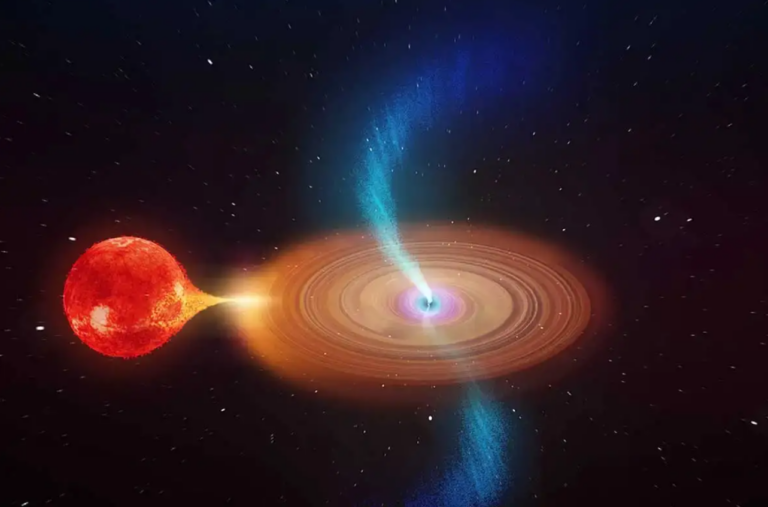A Star Raced Past the Milky Way’s Central Black Hole at Nearly 3% the Speed of Light
Scientists have extracted a new victory when they recorded a star called S2 approaching the supermassive black hole: Sagittarius A* in the galaxy. Messier 87 shown in the above picture was observed by teams using ESO’s GRAVITY instrument mounted in Very Large Telescope in Chile to confirm Einstein’s theory as the star’s light changed shade to red because of the black hole’s strong gravitational force. S2 came to 5,000 mph/second, thus, becomming the first practical verification of gravitational red shift. New discoveries made in relation to this finds the scientific community closer to unlocking more information on black holes and the existence of the forces that govern this universe.
Ever since the stars were discovered to be revolving around the supermassive black hole at the centre of the Milky Way, astronomers have been observing the risky stars. Recently, the ESO announced a breakthrough: In this case one of these stars moved across the black hole’s gravitational field to give the first ever experimental confirmation of Einstein’s general relativity in such a scenario.
Photographed to stunning accuracy, this occurrence illustrates how light can be bent by great gravitational pull of black hole.
Further, Einstein made the declaration that black holes bend light to a degree where the frequency of the light will be decreased under extreme conditions and that has now been substantiated. A researcher named Frank Eisenhuer from ESO, based in Garching, Germany reanalyzed Einstein’s redshift and it matched almost perfectly with the new data as everyone clapped.
“I guess in sports terminology, it’s a victory for Einstein”, noted Eisenhuer.
Sagittarius A* is the black hole in play and It is about four million times more massive than the sun and has series of mysterious stars around it. S2 was at a distance of 20 astronomical units from the supermassive black hole on May 19, 2018, which enabled it to go through the gravitational field and offer an opportunity to experience gravitational redshift.
The gravitational redshift takes place when light having an energy Embedded in a gravitational field loses some of the energy converting to red light. Like any substance that affords fight against gravity, the light drags its wavelength and saps its frequency.
Despite this, scientists have long sought to observe this nearby a black hole and, at a distance of 26,000 light years, Sagittarius A* is well-shielded by dust. Nevertheless, the very important ESO’s Very Large Telescope (VLT) array together with GRAVITY enabled astronomers to retain these phenomena even without this instrument; the accuracy became 15 times more than when using a single telescope.
S2 during the close approach to arrive within 12 billion miles of the black hole at the speed of about 5 000 miles per second or 2. The neutron can, however, be accelerated up to 7 percent of the speed of light.
With this the team was able to compare newer observations of S2 with archival data and analysis to say that the light of the star had actually lost energy and had been stretched to a longer wavelength due to the black hole’s gravity.
“This is the second time we have watched S2’s orbiting around the black hole but this time using much better equipment and have achieved amazing resolution,” said Reinhard Genzel of the Max Planck Institute for Extraterrestrial Physics. “It has taken us years to make preparations for this event with the view of observe these relativistic effects. ”
At a press conference, Odele Staub of the Paris Observatory emphasized the importance of the findings: “That brings us to the following question: This force of nature acts between masses with a force proportional to the product of their and inversely proportional to the square of the distance between them. The concept of time as well as space is the key to understanding the universe through a perspective of the earth, Milky way and even further. ”
The lady said further, “What we found at the heart of our galaxy does seem to conform to Einstein’s black hole picture and this is not possible under Newtonian physics. ”
In the next several months, researchers are expected to track whether this near flyby has changed the motion of S2 and, therefore, provide even more complex statistics about the mass of Sagittarius A* and the development of knowledge about black holes.
This article originally appeared on Discovermagazine.com.
Do not forget to share your opinion with us to provide you with the best posts !




0 Comments